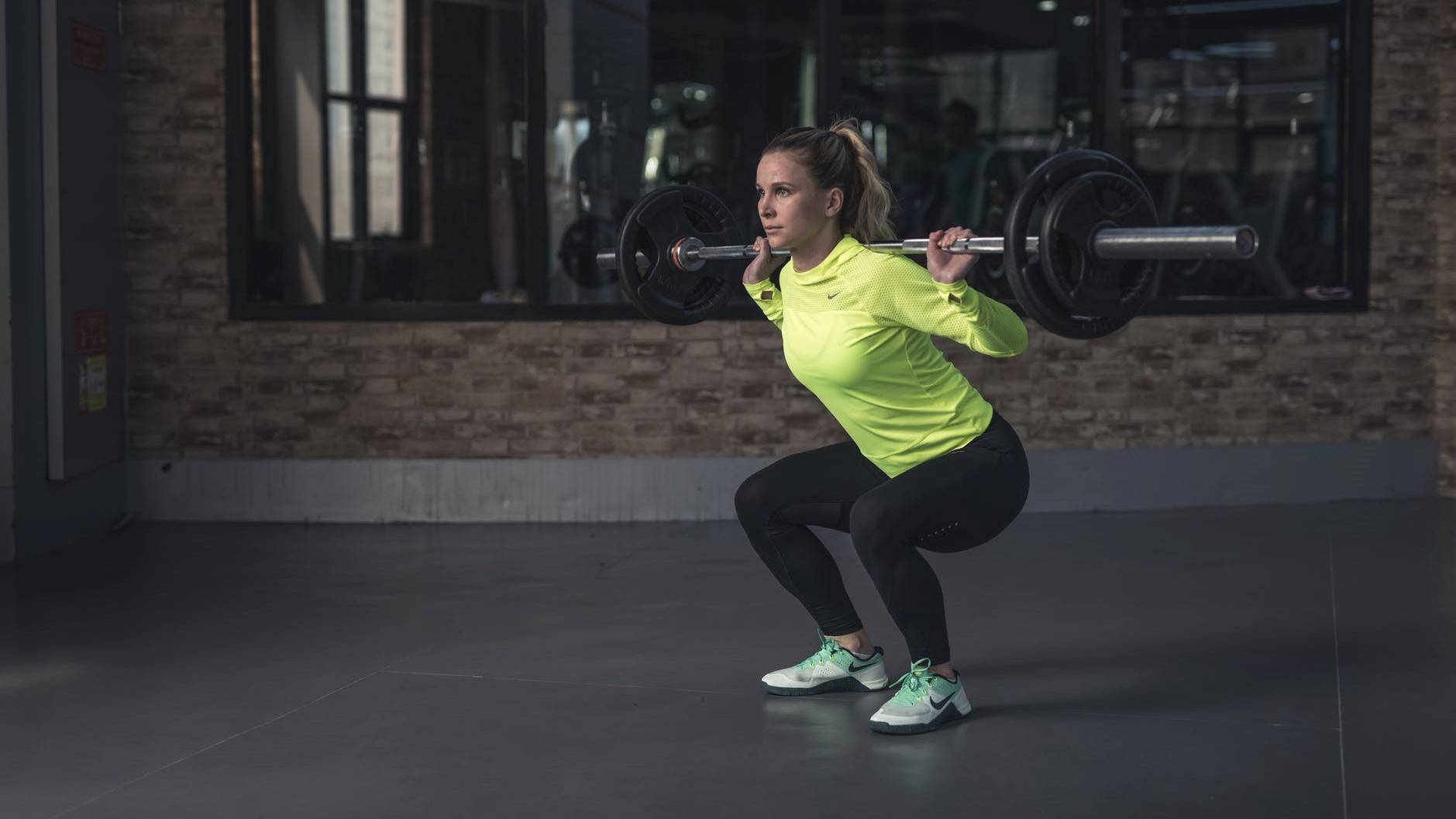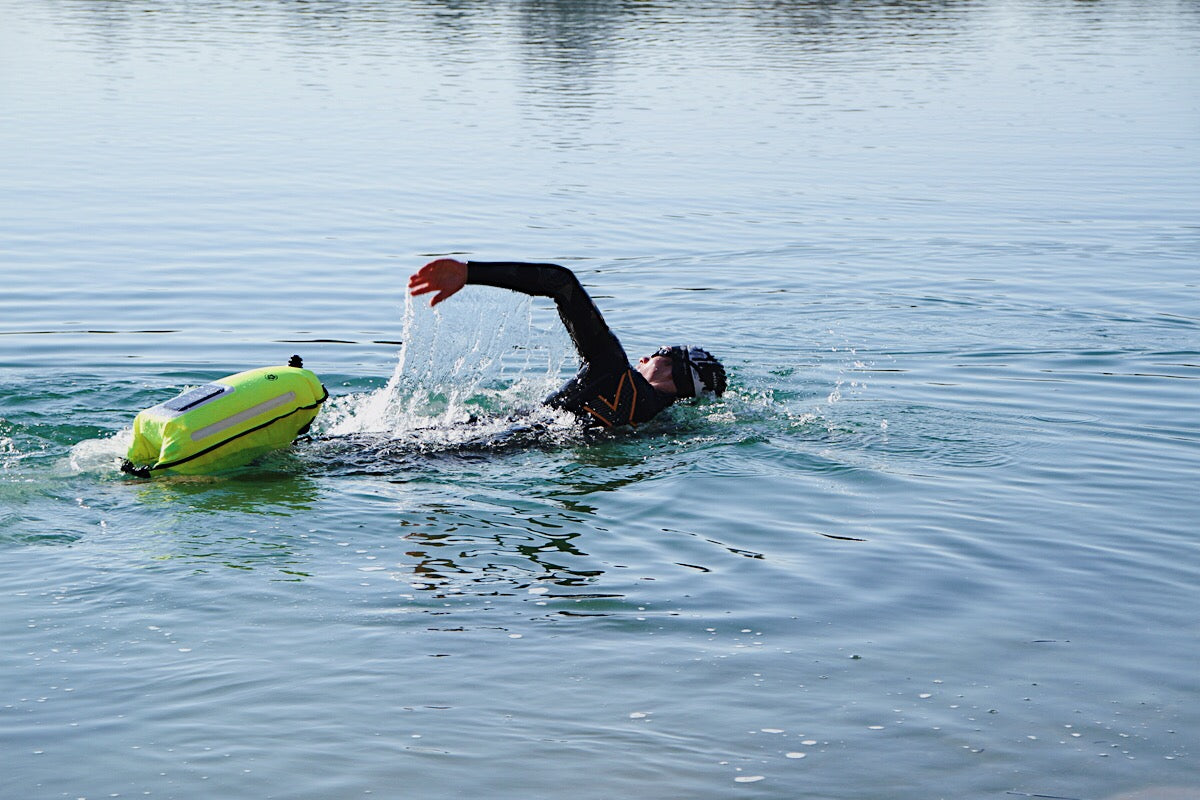Strength training, and in particular maximum strength training, improves movement economy and thus performance. We'll tell you why such training can also be an effective alternative for endurance athletes and how to do it correctly.
Strength training is often seen in connection with "bodybuilding" or "muscle mass gain", which initially sounds rather counterproductive to us endurance athletes, since we triathletes are primarily concerned with increasing endurance performance.
Maximum strength improves your movement economy
However, studies repeatedly prove the effectiveness of such training-accompanying measures. Among other things, an improvement in the running economy of triathletes is reported, which was achieved through maximum strength training of the leg muscles. Another effect of maximum strength training, for example, was an improvement in aerobic performance in cross-country skiers.
What does "economy of movement" mean?
An example: In principle, running is nothing more than the sum of many individual impulses (steps). In order to move as "economically" as possible, each impulse must be carried out with as little impulse loss as possible. The loss of momentum is in turn minimized by a higher level of force.
Conclusion: More power means a more efficient single impulse. The individually optimal running technique is required at this point. In practical implementation, an economical movement is reflected in a much more stable and therefore more dynamic running behavior. When it comes to cycling, one can also speak of economy of movement. Only the "round kick" should be mentioned here.
Maximum Strength Training: What's in it for the Triathlete?
The triathlete has to complete two-thirds of his disciplines on his feet, and there is also a preload in the muscles from changing a wheel to running. This means that there is also a change in movement. Based on these facts, it is obvious that we triathletes in particular need muscular flexibility (when switching from cycling to running), quick adjustment and thus economization in different movement patterns. A certain level of strength is also a prerequisite for many parts of the training, such as interval training, strength endurance training or training in the developmental area.
In order to counteract the everyday problems of the triathlete just mentioned, the concept of strength training and in particular the supportive maximum strength training comes into play.
Strength training methods for triathletes
Strength training is initially a very broad term, so it should be narrowed down. Three methods are relevant for endurance sports.
- IK training (intramuscular coordination): using potential
For improved utilization of the existing muscle potential.
- Strength endurance training: strong endurance
Methods to improve muscular endurance (at medium to high loads).
- Maximum strength training: More muscle
Clearly, maximum strength training is by definition aimed at increasing muscle mass, so-called "hypertrophy". To increase muscle mass, the methods of submaximal muscle action have prevailed, i.e. the muscles should be exhausted after a short time. This has an effect on muscle growth, i.e. the muscle cross-section is enlarged. The muscle cross-section is in turn the decisive factor influencing maximum strength.
Maximum strength training for triathletes
Maximum strength training for endurance athletes should be viewed in a more differentiated manner than is the case for pure strength athletes (bodybuilders). The well-known statement that maximum strength training increases body mass due to muscle growth is not entirely true in the case of endurance athletes.
It's the dose that counts
This should only be an optimally supportive muscle building training. The already very high training workload of endurance athletes also does not allow for unfavorably high muscle growth as in strength athletes, because the time for such extensive training would be too short. For triathletes we are talking about one to a maximum of three strength training sessions per week.
This is what maximum strength training for triathletes could look like
For beginners, it makes sense to first complete a certain period of acclimatization, in which both the scope and intensity are kept lower. An example of this would be:
3 sets of 12 to 15 reps
Load intensity: 60-70 percent of the concentric dynamic maximum load
For the advanced athlete, training can be as follows:
4 to 5 sets of 8 to 12 reps
Load intensity: 60 to 90 percent of the concentric dynamic maximum load
This is something to keep in mind when doing maximum strength training for triathletes
- Avoid total muscle exhaustion
- Lower energetic load (avoid too high an increase in lactate concentration, no more than 5 series and not several exercises in one day)
- Slow and controlled repetitions
The timing of this training also plays a crucial role for endurance athletes. Since this is primarily about training the lower extremities and these are already heavily used by runners, cyclists and triathletes, full exertion is not recommended, as already mentioned above, and it should be adapted to other training habits.
In autumn/winter, the recommended series/number of repetitions can be carried out two to three times a week without hesitation.
However, as soon as the intensity of the sport-specific endurance training increases, the maximum strength training must be significantly reduced to around 6 to 8 repetitions with the same load and number of series and a maximum of once or twice a week. In the active competition phase, it is advisable to limit or omit maximum strength training.
Useful for all triathletes
Maximum strength training makes sense for every triathlete, both beginner and advanced. It doesn't matter whether you train for a sprint, short or long distance. The advantages just mentioned are shared among all triathletes.
Conclusion
- Maximum strength training is an effective way to achieve a higher level of strength
- A higher level of strength has a positive effect on the movement economy of the endurance athlete
- Compared to pure strength athletes, the scope and intensity of the training must be differentiated and adapted to endurance athletes in a somewhat more moderate form
- Should be subject to the actual training content of the respective sport
- Stabilization training is another useful method of supportive strength training




















